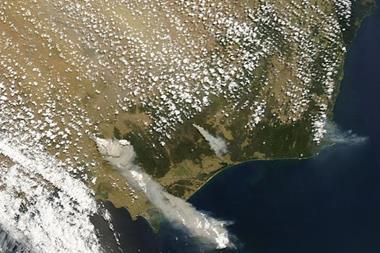Australia's fires and floods prove that governments need to toughen their targets to curb Greenhouse emissions
Recent natural catastrophes, including the deadly wildfires that ripped through Australia’s southern states at the beginning of February, have prompted calls for tougher climate change restriction targets.
A record heatwave at the beginning of February set off bushfires in Victoria, while large areas of Queensland were flooded by tropical downpours.
So far the series of wildfires has killed 210 people and destroyed over 1,800 houses, with up to 2,000 more homes left uninhabitable and an estimated 7,500 people homeless.
Scientists have warned in the past that global warming is a major cause of increasingly extreme weather. And now environmentalists say the fires and floods prove that the government needs to toughen its targets to curb Greenhouse emissions.
Australia’s dry climate makes it particularly vulnerable to an increase in global temperatures. As there are very few water reserves, the country is prone to severe drought.
Currently the government has set a target of cutting emissions at between 5 and 15 percent by 2020. But Green groups want the government to cut emissions by at least 25 percent.
World leaders will come together in Copenhagen later this year to agree a post Kyoto framework for cutting global emissions.



















No comments yet